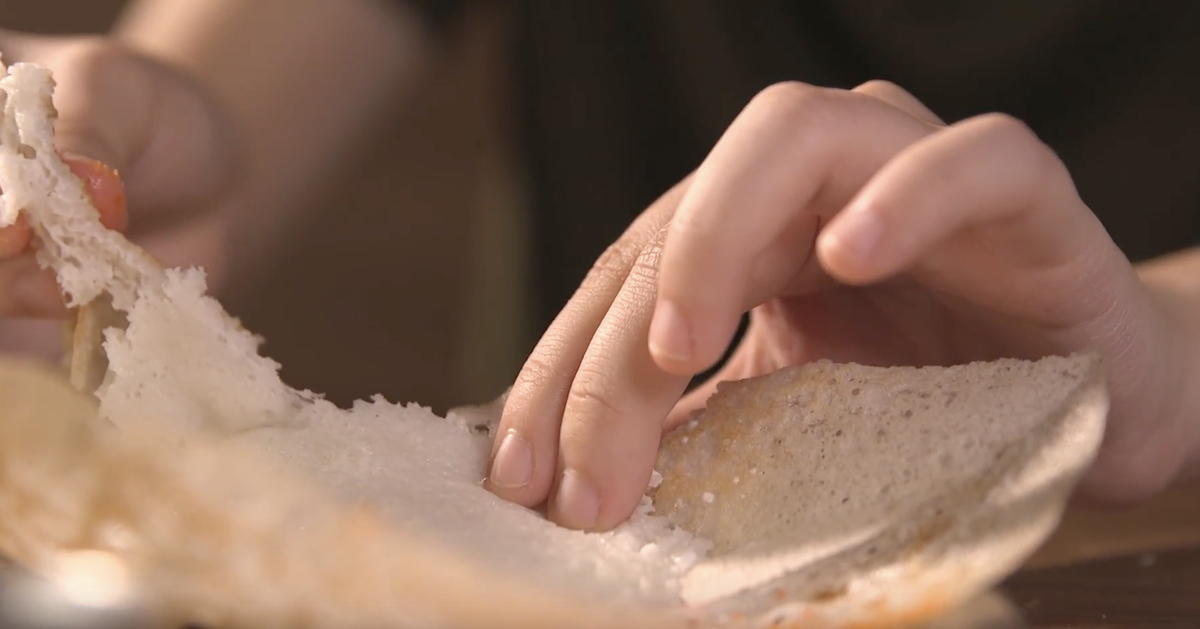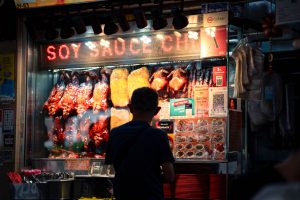The best pancakes I’ve ever had in my life were by The Fabulous Baker Boy. It was all cinnamon, brown sugar, cream cheese and maple syrup. I remember taking a bite, and being promptly transported to pancake heaven.
As I was coming back down to earth, I wondered if I would ever taste a pancake as good again.
Turns out, I didn’t have to wait long.
13 days later, I stumbled into the Madras New Woodlands restaurant, in the heart of Little India’s many alleyways, and found Appam.

Don’t let pictures fool you. While a Google search of Appam may pull up some unappetising images, it looks – and tastes – most delectable in person.
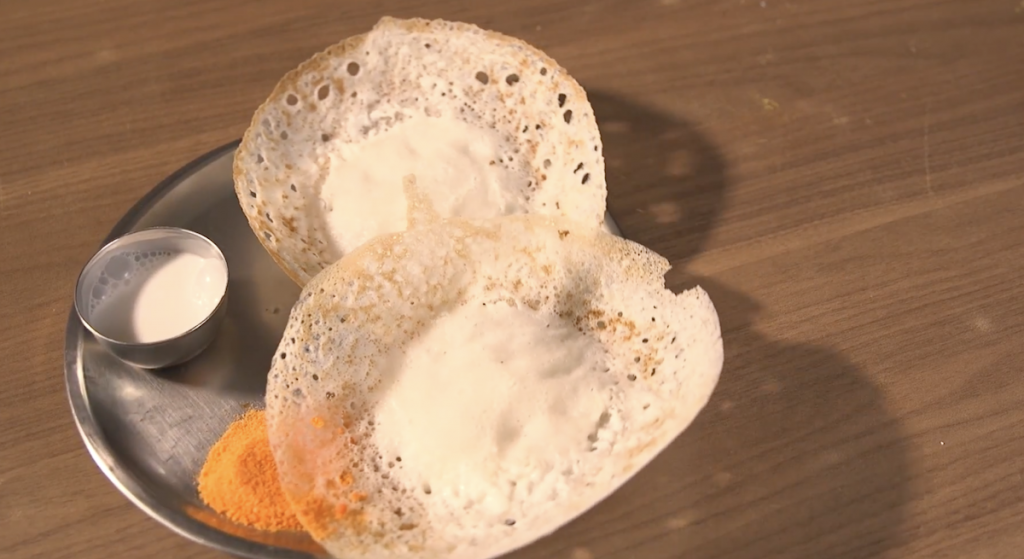
Miss it, and you’ll have to wait till dinner time to get your Appam fix.
Rohei, the manager of Madras, tells me that “it is standard for Appam to only be served during breakfast and dinner” when the sun is not at its hottest.
“Since the coconut milk is hot, and during the day, the sun is also hot, if you eat Appam then, it will give you stomach problems.”
Given my penchant for living dangerously, I cut it close and arrive at the restaurant at 10 AM where I’m met with the late breakfast crowd.
Groups of Indian men and women sit and chat over cups of Masala tea. Huddled in a corner are a handful of tourists and their oversized luggages. And then there’s me.
I suspect we’re all here for the same thing.
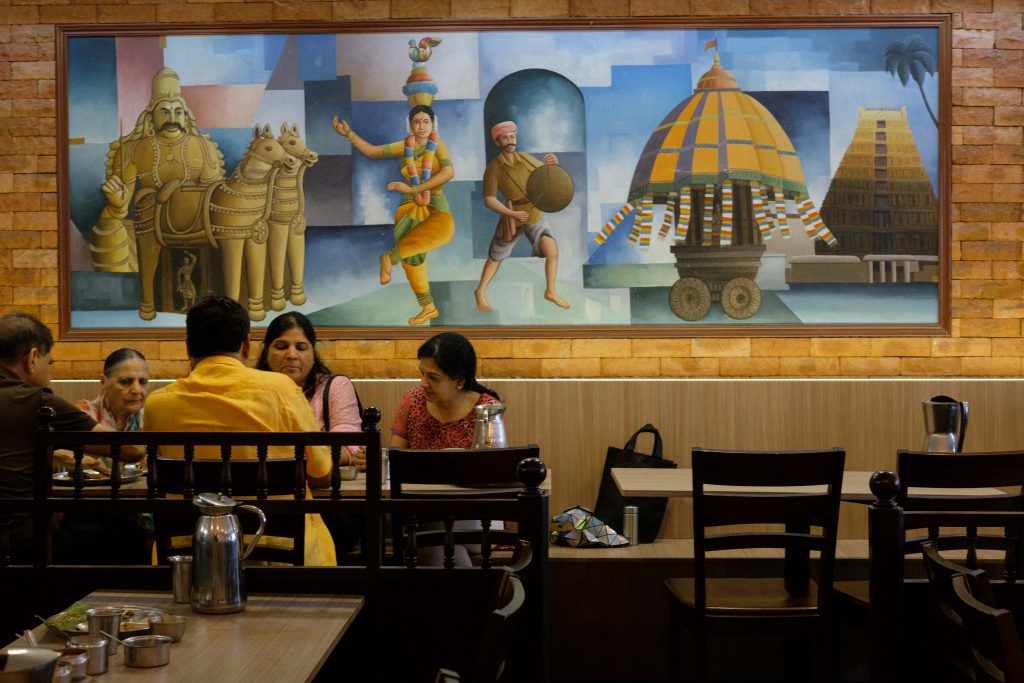
At Madras, the Appam (their speciality) is made in a standalone counter, out in the open and separate from the central kitchen where the rest of the restaurant’s South Indian cuisine is prepared.
The batter is a mixture of cooked and uncooked rice, coconut milk, yeast, salt, sugar and water. It’s prepared either the night before, or very early in the morning.
Only after the yeast has fermented for a good 8 to 12 hours, with the batter turning bubbly and light as air, is it ready.
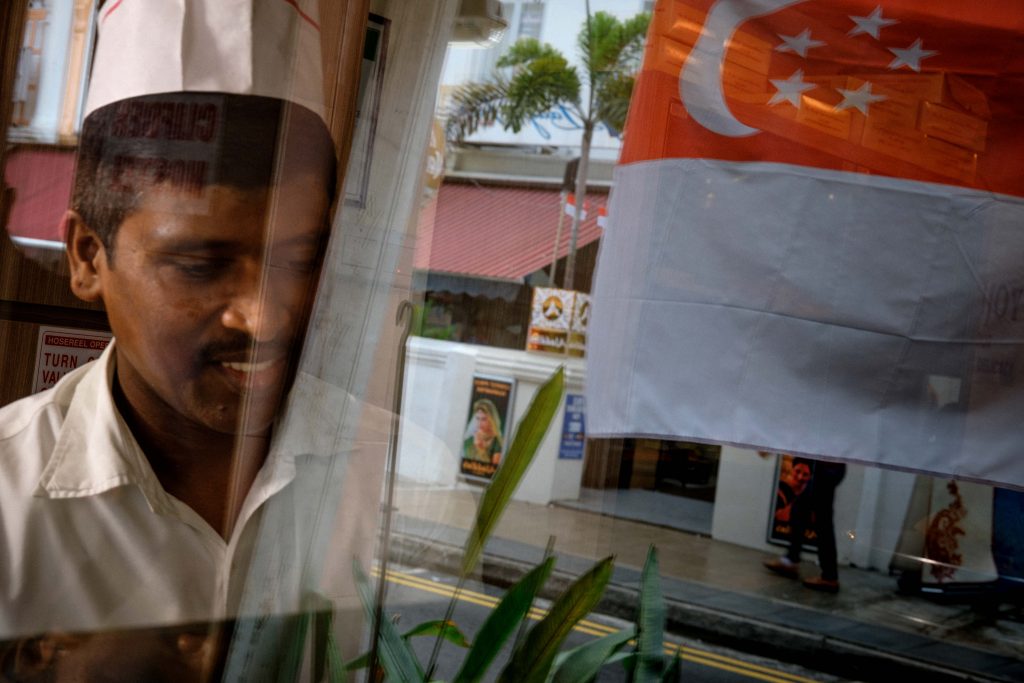
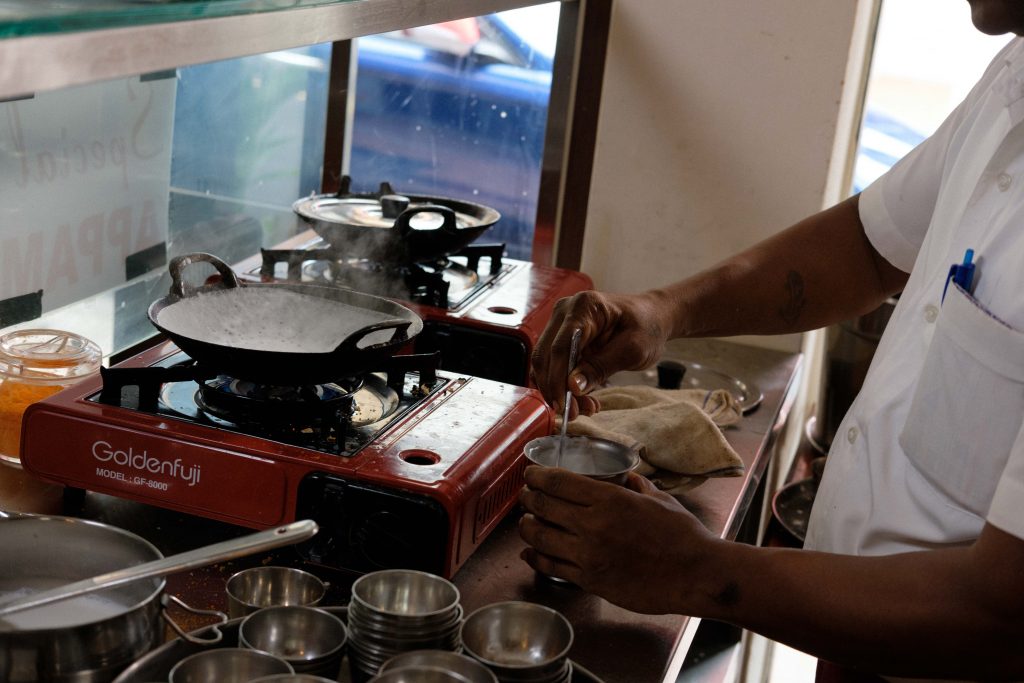
He works fast. Once the pot is sufficiently hot, he pours a ladleful of the pale bubbling batter into the pot and deftly swirls it around so that the batter spreads evenly to cover all the sides.
Within seconds, the pot is back on the stove. He clamps on the lid and moves to work on the next pan.
He doesn’t have the conscious showmanship of a chef on television, but he has all the skill and experience of one.
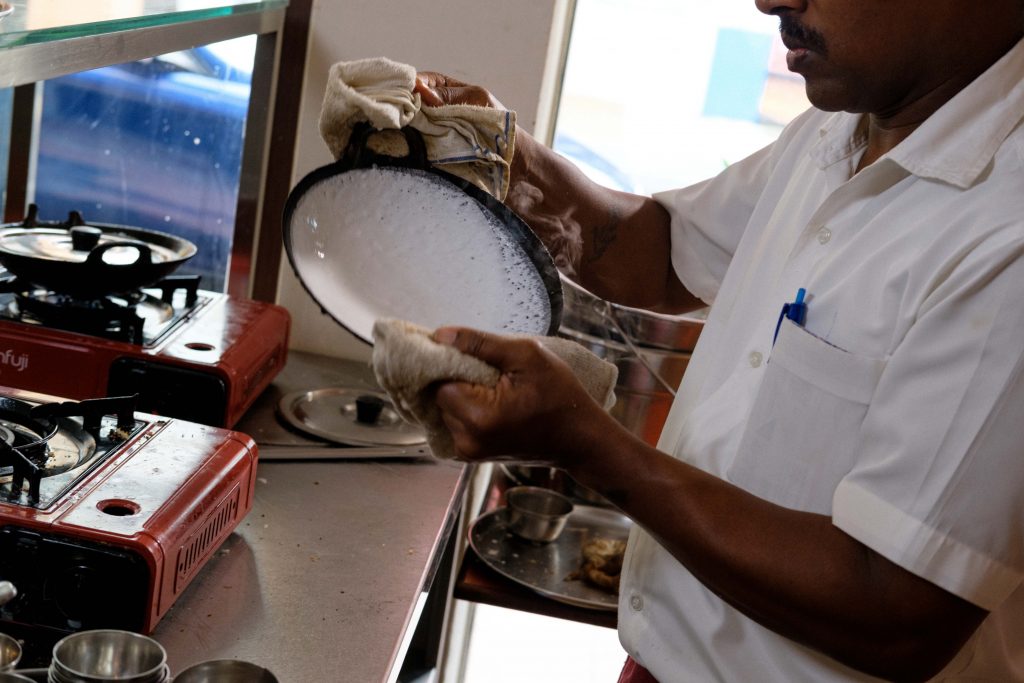
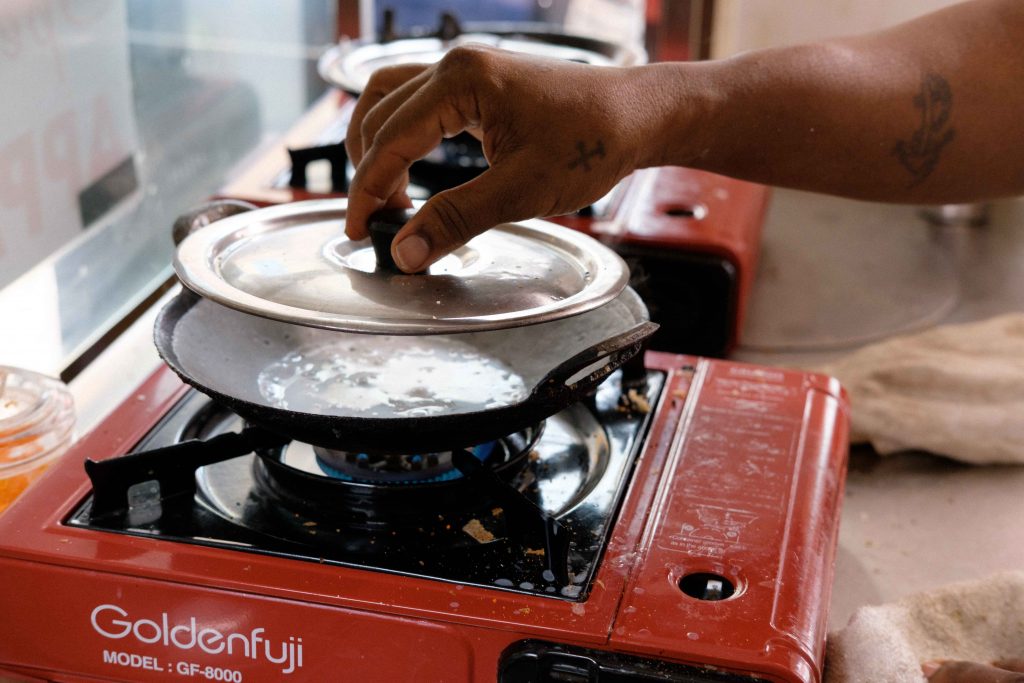
What he’s just made is a variation of Appam, the Palappam, where a spoonful of thick coconut milk/cream is added later to the doughy centre of the pancake.
Another minute passes. And the Appam is done.
He removes the lids and carefully, but swiftly, scrapes the paper-thin crust of the Appam from the sides of the Appachatti. The pancakes are placed on a metal plate, together with a heap of orange sugar and a small saucer of coconut milk.
According to Daniel from Heaven’s Appam, only Malaysians and Singaporeans eat it this way. Elsewhere around the world, Appam is traditionally served with moilee (seafood stew), ishtoo (spiced stew of potatoes and coconut milk), curry, and sambal.
As Appam is considered to be best eaten straight from the pan and piping hot, it’s not long before the plate is whisked away and served.
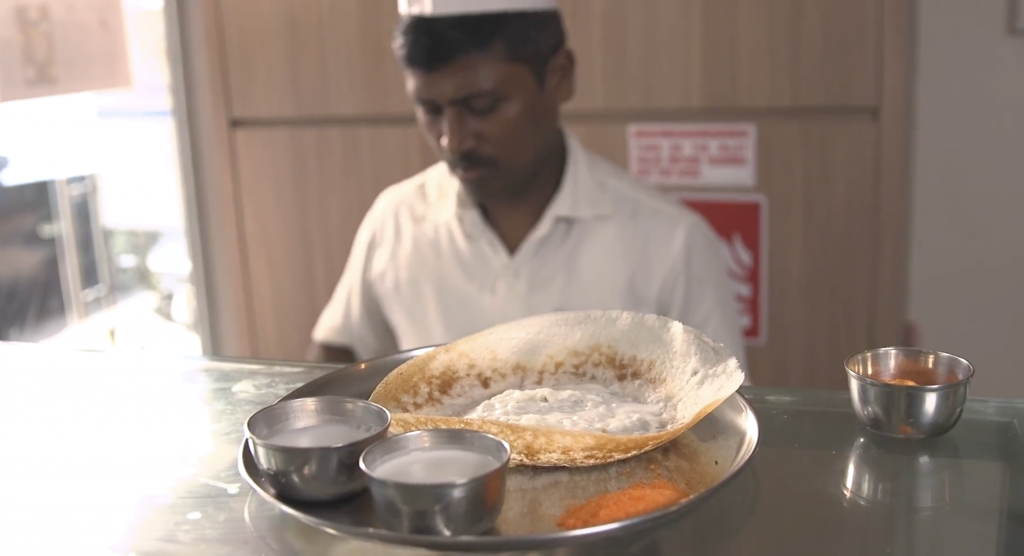
Sarah from NOSHtrekker tells me that it’s the Jews who are credited for bringing their Appam recipe to Kerala as one of the region’s earliest settlers.
How early? To put things into perspective, Appam is found to have been popularly featured in ancient Tamil poems dating back to 300 BC.
But this pancake hasn’t only withstood the test of time, but distance as well.
After establishing itself as a staple food there, Appam spread throughout the rest of India and later, wherever the Indian diasporas established themselves, including Sri Lanka, Malaysia and yes, Singapore.
In fact, Appam has been so popular in Sri Lanka that authors of the Sri Lanka Cookbook Prakash K Sivanathan and Niranjala M Ellawala, describe it as “probably the number one street food in Sri Lanka”. In fact, “Most households don’t even make [Appam] because they’re so readily available”.
While we may not be as lucky as them, at least we have places like Madras New Woodlands.
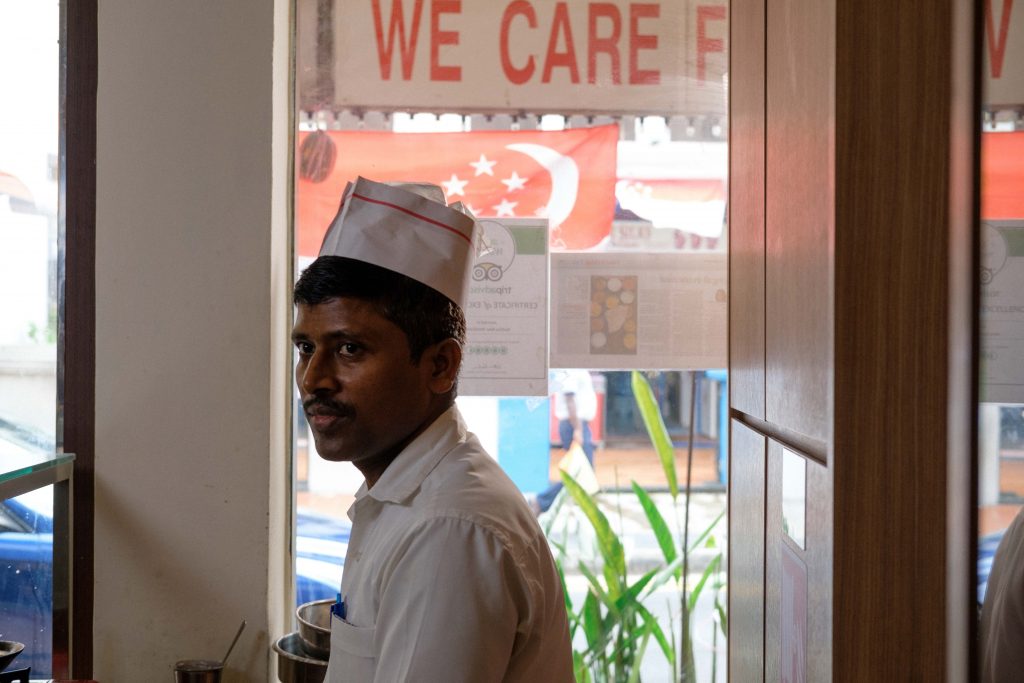
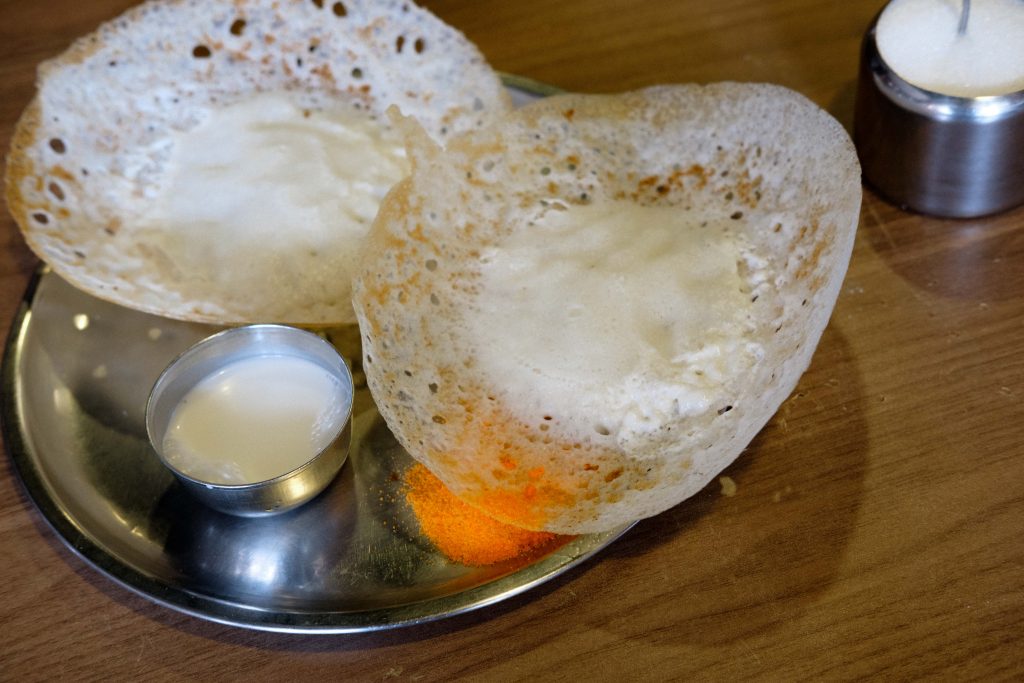
I dive in without hesitation.
While it may not make for a great picture, given that the edges are punctured with holes, courtesy of a well-fermented batter, it does make for an excellent snack.
The crust is paper thin and crispy to a fault. It won’t crumble at the slightest touch but it will break if you manhandle it like I did.
Undoubtedly the crunchiest part of the pancake, I can’t resist breaking off a piece of crust to taste. It reminds me of the crunchy part of a crepe, only better, thinner, crunchier.
The interior, where the coconut-centre resides, is firm to the touch, but yet soft and gooey inside. It’s my favourite part. It’s also hot – very hot.
When I try to eat it as most Indians do, with only my right hand, I relish the resistance I feel when pulling it apart. It feels just like I’m biting into a Min Jiang Kueh, only this time, I’m using my fingers.
Of course that is until I grow impatient, and end up tearing off large chunks of the pancake with both hands. I try (unsuccessfully), to conceal my lack of etiquette from the other diners.
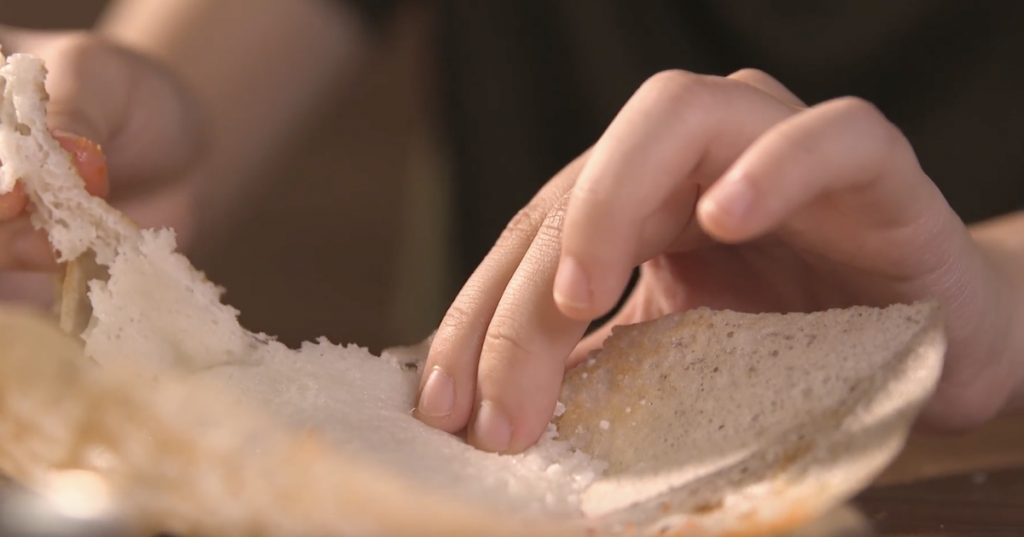
Once it’s coated to my heart’s desire, I pop it into my mouth.
The restaurant din fades away, and I’m back in pancake heaven.
Only when I come down, am I able to register the sweetness of the coconut milk and sugar, which evenly balances out the slightly sour tang of the pancake created by the fermented batter.
It’s a perfect marriage of flavours.
Within minutes, the first pancake is devoured and I find myself requesting an extra helping of sugar, one which the restaurant happily obliges me with.
Granted, it’s not the most healthy of dishes. But really, who’s thinking about healthy food now?
In my mind, I make a mental note to bring every living person I know here.
Suddenly, Rohei the manager announces, “Okay, Appam finish!” It’s 1030 AM.
The portable stoves are switched off and the paper hat removed. Masala tea in hand, the chef retires to the kitchen. Tonight, he will do it all again.

